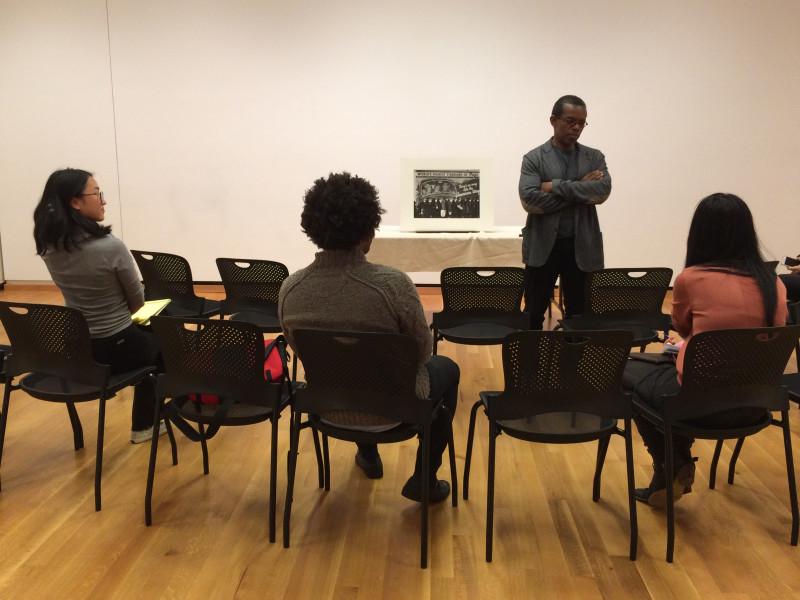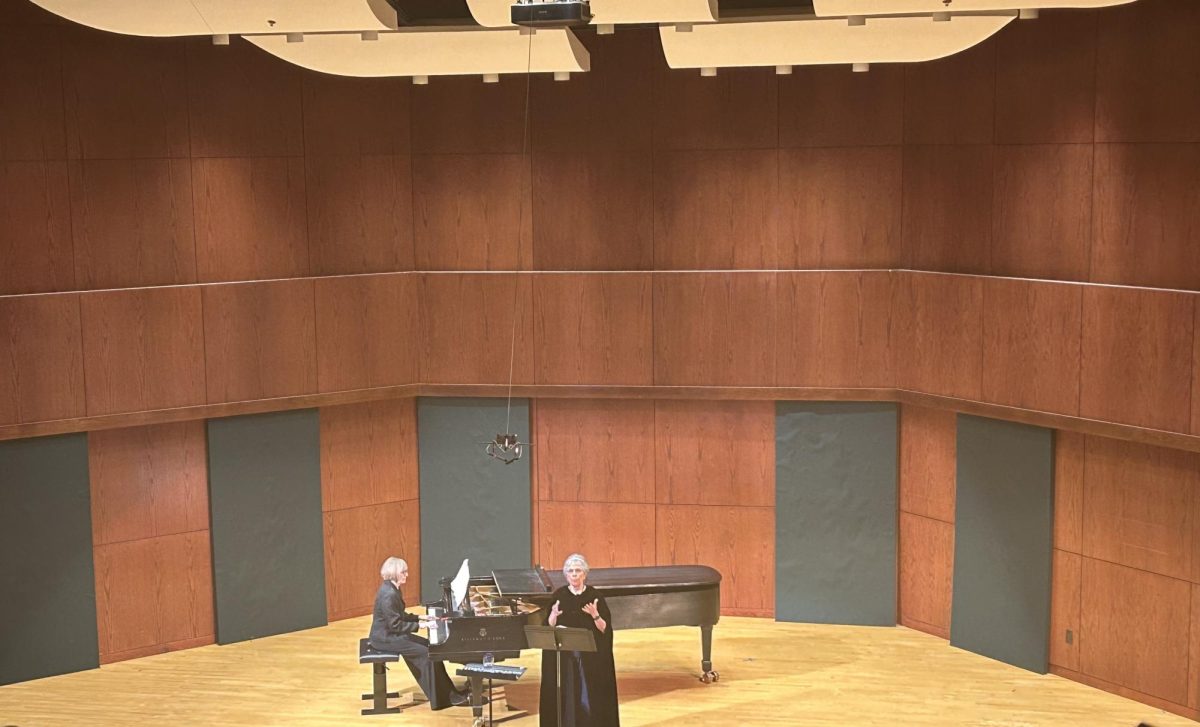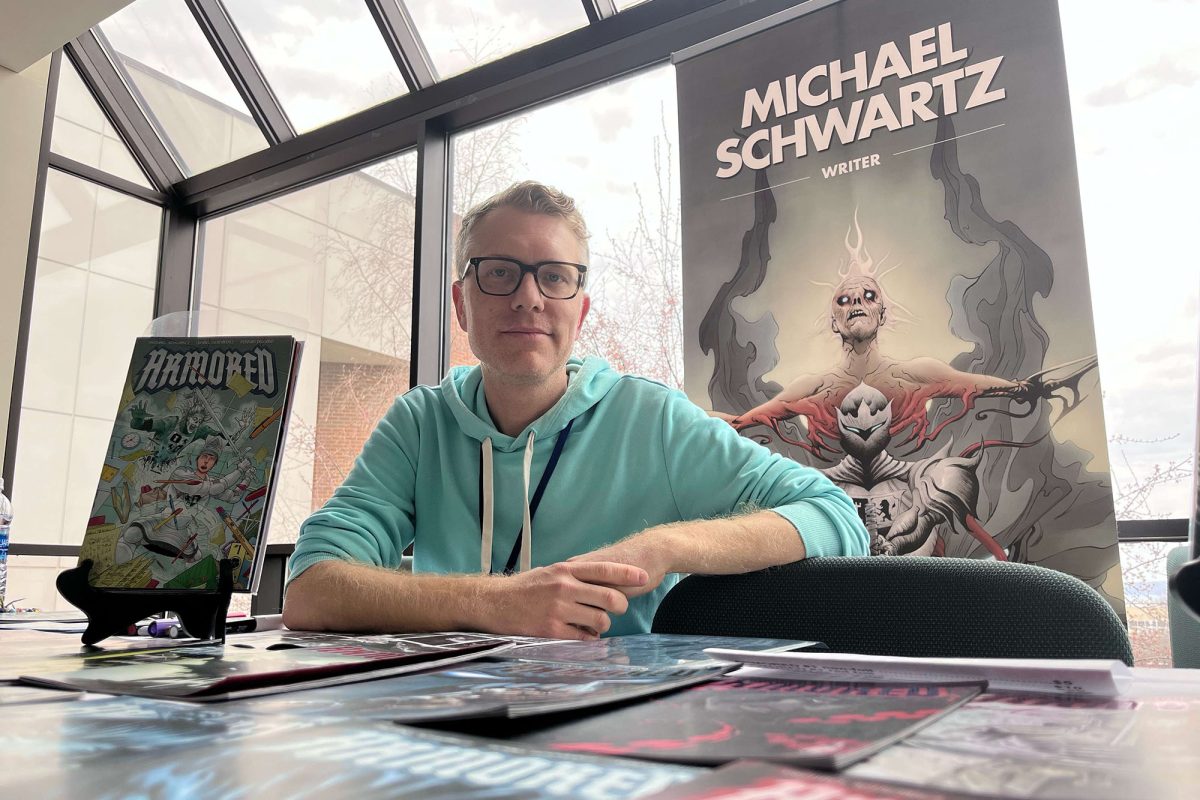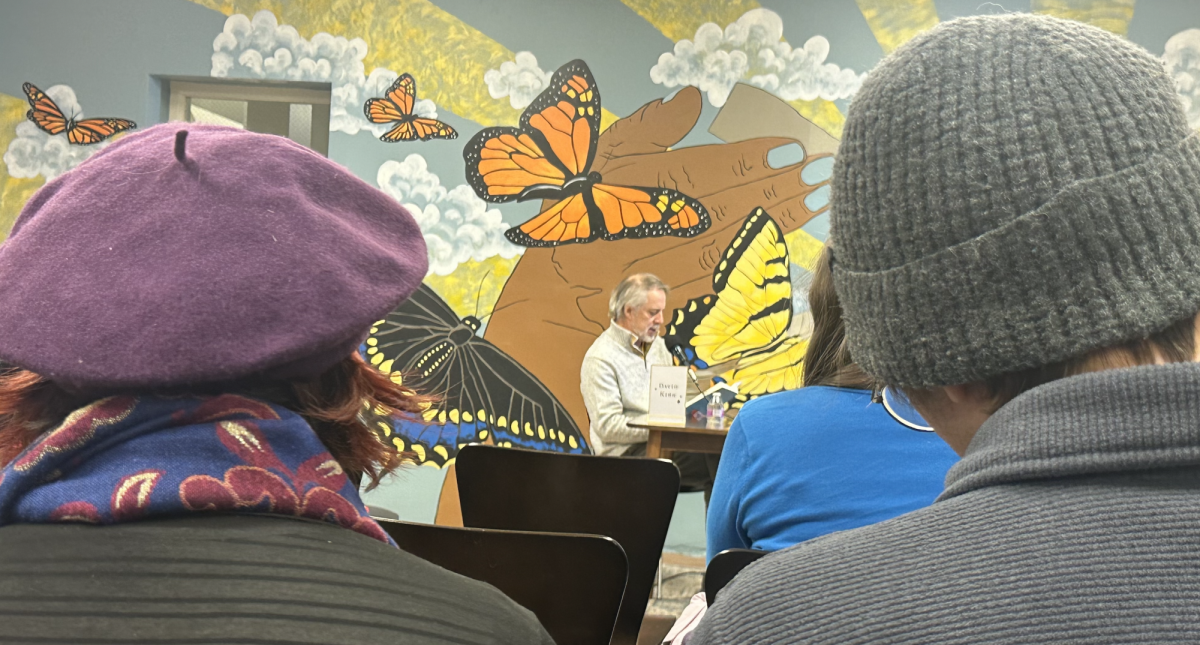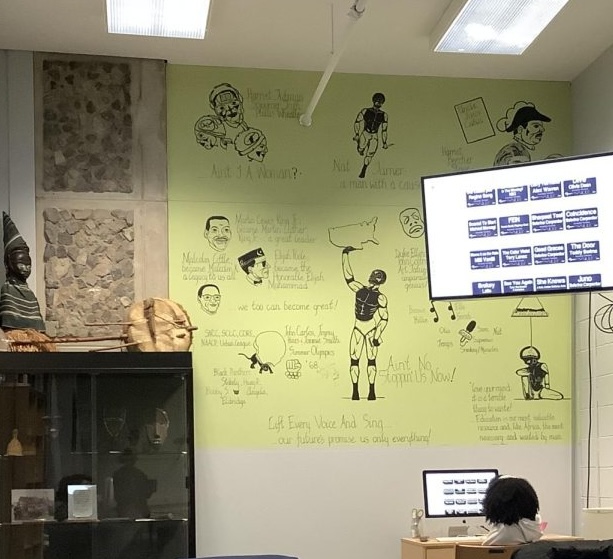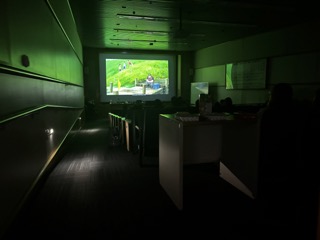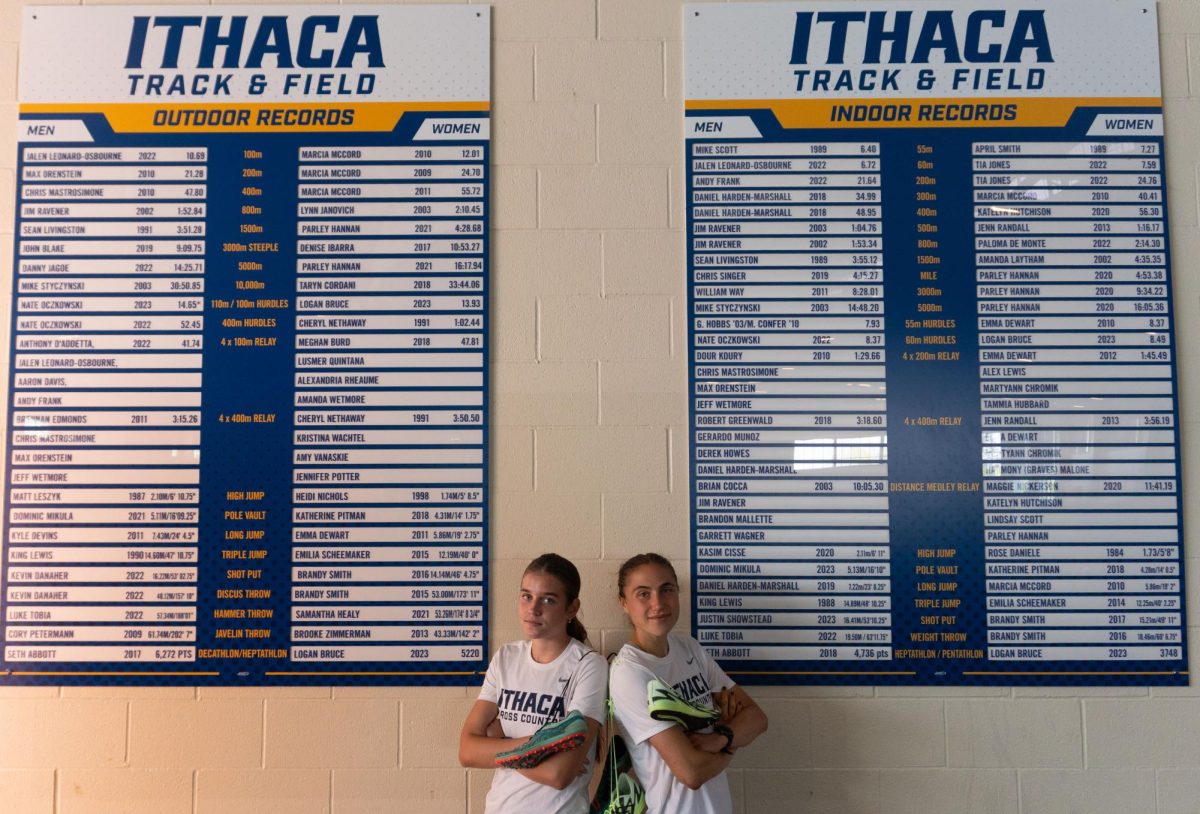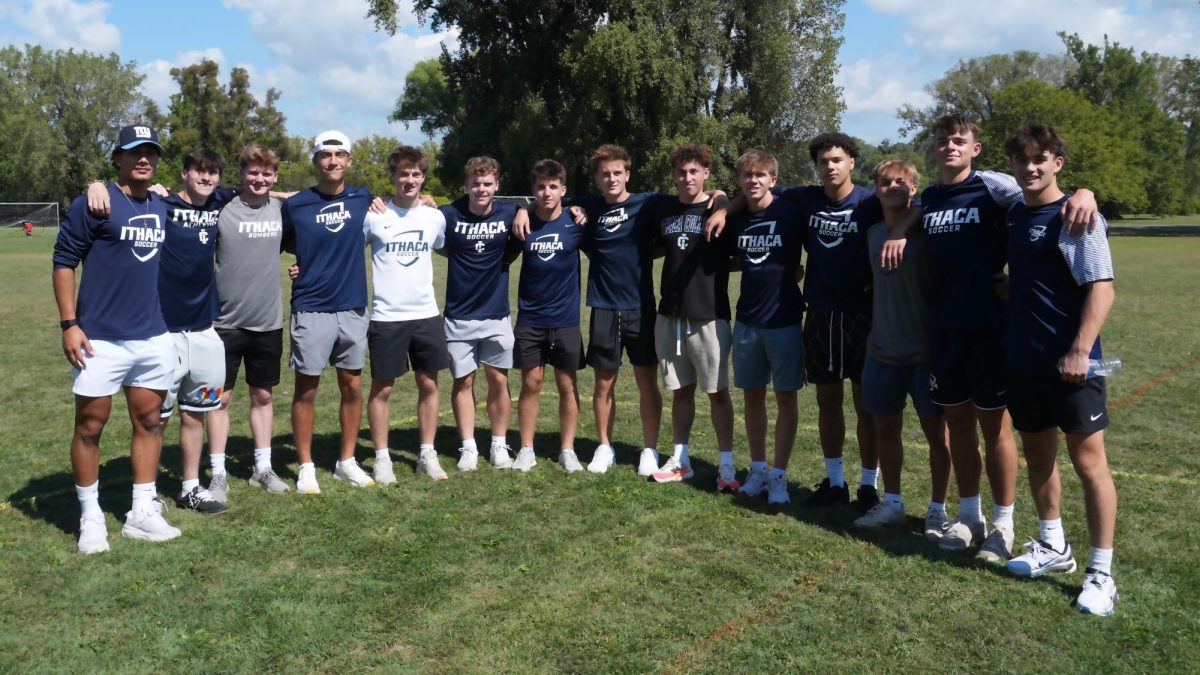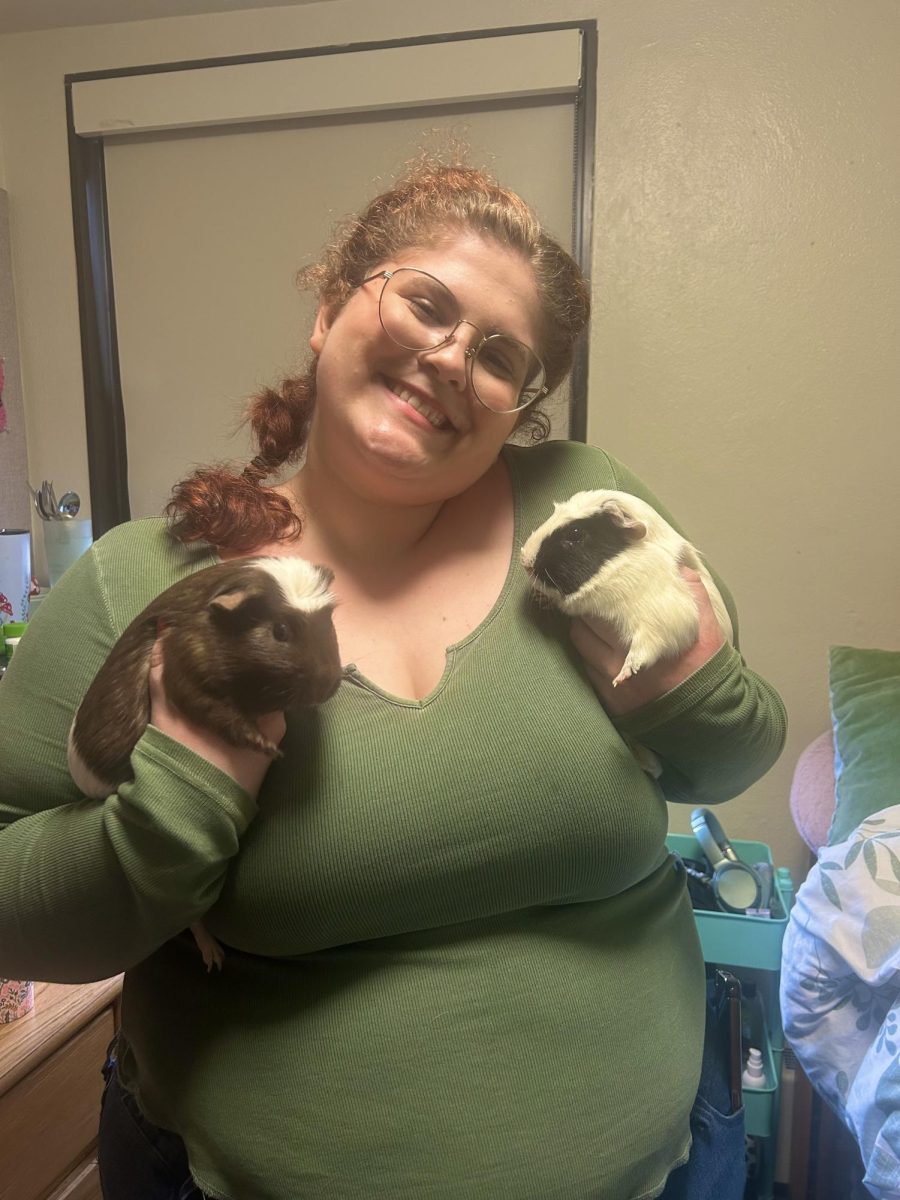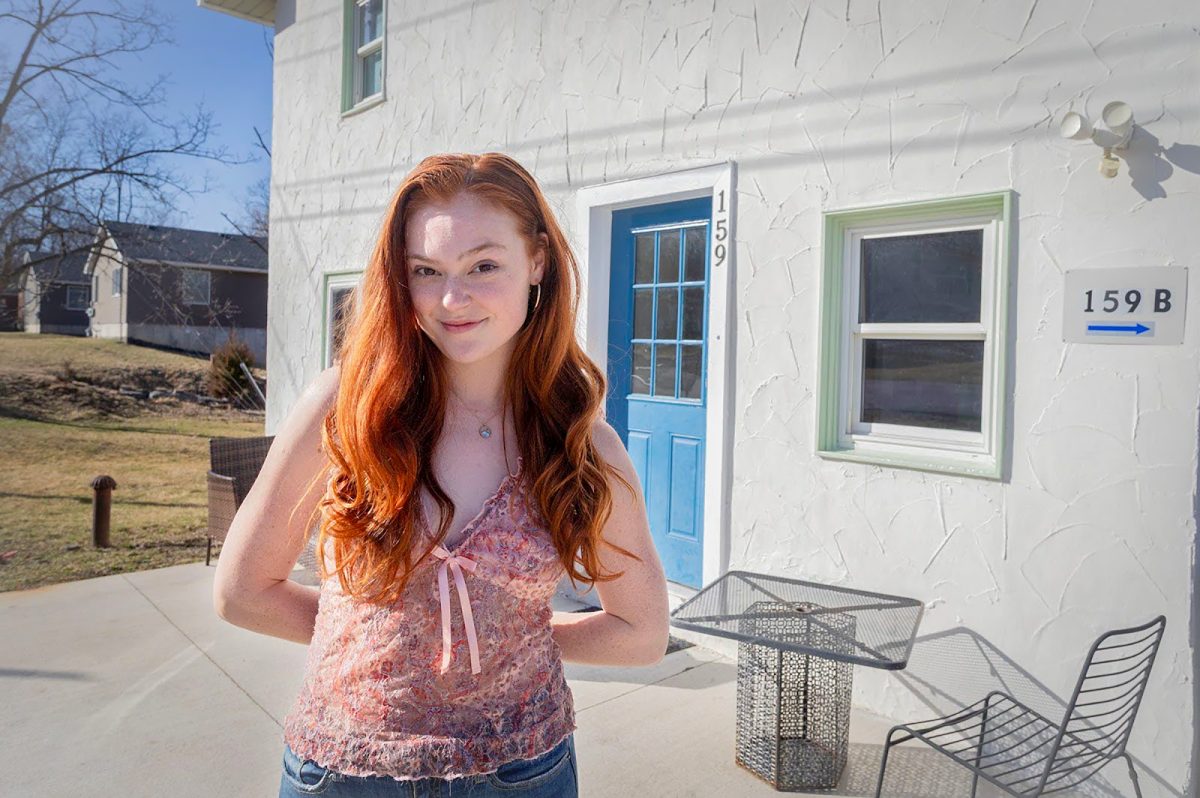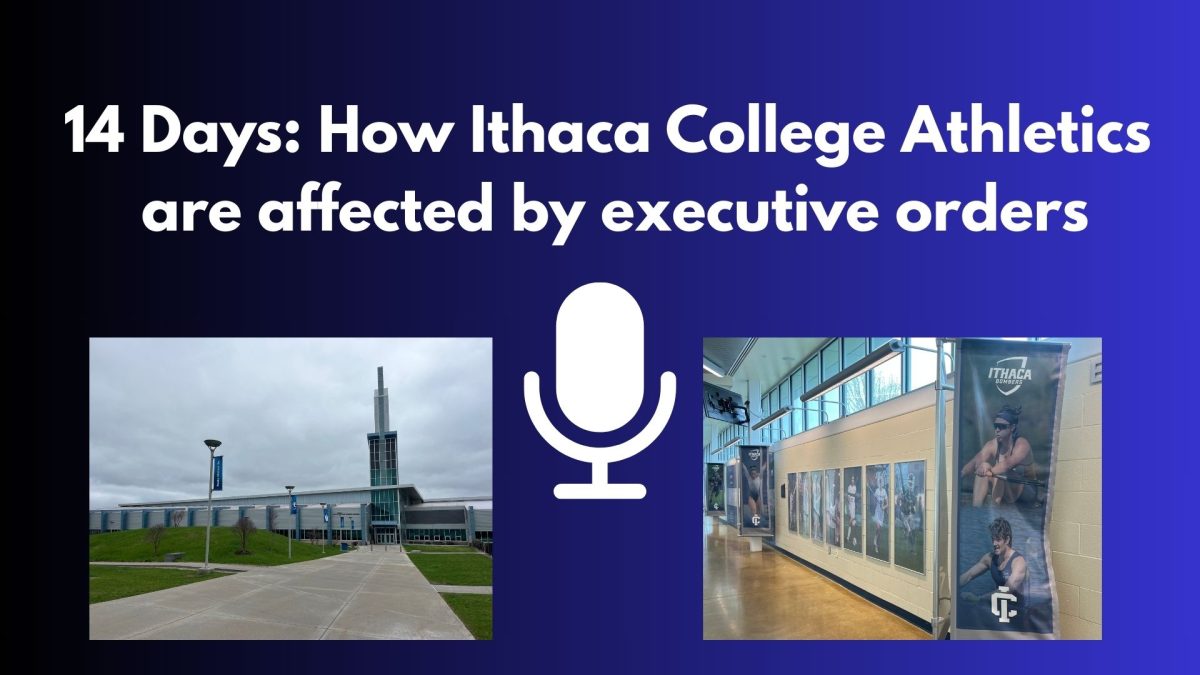Behind a locked door in the basement of Cornell University’s Herbert F. Johnson Museum, Kari O’Mara carefully picks up a photograph with gloved hands and walks it to a nearby room, where she sets it alone on a table.
The photograph, titled “After the Louisville Flood,” was the centerpiece to a discussion about art and race lead by Cornell visiting associate professor Bill Gaskins. The event is the second in a new series at the Johnson Museum called Contemporary Conversations.
“Every photograph has something that goes on beyond the frame and that’s the context: there’s a social context, there’s a historical context, there’s a political context, there’s a ideological context,” Gaskins said. “The more you know as a citizen, the more you’ll be able to get from the photograph as a spectator of it.”
Each of the three events are scheduled to take place on the first Thursday of the months of October, November and December. This semester, three different professors at the university are working with the Johnson to connect specific works of art within the extensive collection to shed light on larger issues.
This is the first semester that the Johnson is holding the Contemporary Conversations discussions, and the three issues being highlighted are sexuality, race and gender.
O’Mara, who is the Andrew W. Mellon Coordinator of Student Engagement at the Johnson, said this series was first discussed at a Student Advisory Committee meeting, where students meet with staff to discuss the ways in which the museum can function within the campus community.
“They wanted a little bit more of an academic art engagement program,” she said. “Something that they could talk about issues that are either not completely discussed in class or a little bit too hard to try to do over coffee.”
Gaskin’s conversation on art and race took place on Nov. 5. Gaskins said the photo he chose, which juxtaposes poor people of color against a mural depicting the American Dream, immediately came to mind when he was asked to select a piece from the Johnson collection.
“I didn’t see anything that enabled me to have a platform for talking about art and race as effectively as the Margaret Bourke-White photograph,” Gaskins said.

The first event, which connected art with sexuality, was lead by Professor Andrea Parrot on Oct. 1. O’Mara said about twenty people attended the event, during which Parrot used two photos to start a conversation about Body Dysmorphic Disorder and the ways in which society shapes our ideas about bodies.
The last Contemporary Conversations event of this semester will be held on Dec. 3 and lead by Professor Maria Fernandez. O’Mara said Fernandez will use an early example of feminist art to inspire a conversation about feminism and localize it to college campus issues.
Jaimeson Daley, a PhD student at Syracuse University and an employee of Cornell University who attended Gaskin’s event, said that the conversational structure of this series makes it a powerful tool for learning.
“I could read anything about these subjects, like on my own, but I like the community aspect of it, in talking to other people and hearing other people’s thoughts,” Daley said.
Part of the reasons that the Contemporary Conversations events are so powerful, O’Mara said, is that professors, students and community members can still see the relevance of issues that are depicted in works of art from earlier decades, and even earlier centuries.
“The interesting thing [is that] these topics are never fully addressed,” she said. “It’s something that, no matter what time period it is, it’s going to be contemporary.”
Yajie Zheng, a senior undergraduate studying art history at Cornell, also participated in Gaskin’s November discussion. Zheng said that using art to inspire these conversations is important because both art and these contemporary issues are not examined thoroughly enough on college campuses.
“Art is always related to race, gender,” Zheng said. “Always.”
O’Mara said that using artwork as a springboard for wider conversations also makes art more accessible to students and the community. The series will continue into the spring semester, she said.
“You can talk about these big issues, about sexuality and race and gender, but to have something to keep going back to visually, to show that art isn’t just for artists, art isn’t just art, it is much bigger than that — it can really lead to these larger discussions,” said O’Mara.

